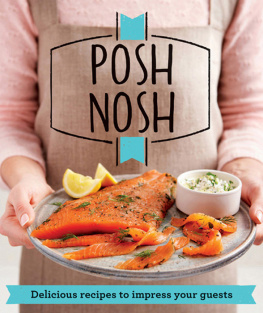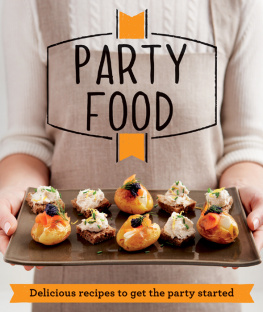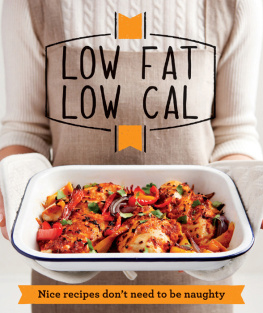


Copyright The National Magazine Company Limited and Collins & Brown 2013 All rights reserved. No part of this publication may be reproduced, stored in a retrieval system, or transmitted in any form or by any means, electronic, mechanical, photocopying, recording or otherwise, without the prior written consent of the copyright holder. The expression Good Housekeeping as used in the title of the book is the trademark of The National Magazine Company and The Hearst Corporation, registered in the United Kingdom and USA, and other principal countries of the world, and is the absolute property of The National Magazine Company and The Hearst Corporation. The use of this trademark other than with the express permission of The National Magazine Company or The Hearst Corporation is strictly prohibited. The Good Housekeeping website is www.goodhousekeeping.co.uk First eBook publication 2014 eBook ISBN 978-1-90939-745-3 Also available as a paperback Paperback ISBN 978-1-908449-92-4 The print editon of this book can be ordered direct from the publisher
at www.anovabooks.com, or try your local bookshop.
 NOTES
NOTES Both metric and imperial measures are given for the recipes.
Follow either set of measures, not a mixture of both, as they are not interchangeable. All spoon measures are level. 1 tsp = 5ml spoon; 1 tbsp = 15ml spoon. Ovens and grills must be preheated to the specified temperature. Medium eggs should be used except where otherwise specified. Free-range eggs are recommended.
Note that some recipes contain raw or lightly cooked eggs. The young, elderly, pregnant women and anyone with an immune-deficiency disease should avoid these because of the slight risk of salmonella. 

 Classic Cakes The Golden Rules Cake recipes vary greatly, not only by the methods used to make the cakes, but also in the balance of the various ingredients. There are no secrets to making a great cake all you need to do is follow these simple golden rules. If making larger cakes, check first that your oven is big enough. There should be at least 5cm (2in) oven space all around the cake tin to ensure that it cooks evenly. Always make sure you have the correct tin shape and size according to the recipe you are making.
Classic Cakes The Golden Rules Cake recipes vary greatly, not only by the methods used to make the cakes, but also in the balance of the various ingredients. There are no secrets to making a great cake all you need to do is follow these simple golden rules. If making larger cakes, check first that your oven is big enough. There should be at least 5cm (2in) oven space all around the cake tin to ensure that it cooks evenly. Always make sure you have the correct tin shape and size according to the recipe you are making.
The tin sizes quoted in this book refer to the base measurement of the tin. Ensure the tin is properly prepared and lined for baking the recipe you have chosen to make. Check that you have all the necessary ingredients stated in the recipe and that they are at the right temperature. Weigh out and/or measure all the ingredients accurately using scales, measuring spoons and a measuring jug. Always work in either metric or imperial. Use the egg sizes stated in the recipe.
Substituting different sizes can affect the balance of the cake mixture. Sifting dry ingredients together helps not only to aerate, but also to disperse lumps. Store flours and raising agents in well-sealed packets or airtight containers in a cool, dry place. When making cakes by hand, beat well with a wooden spoon until the mixture is light and fluffy (only possible if your butter is at the correct temperature). Be careful not to over-process or over-beat the mixture; the mixture can over-rise in the oven, then collapse and dip in the centre during baking. Always scrape down the mixture with a spatula during mixing (remember to turn off any electric mixers first).
If ingredients have to be folded into a cake mixture, use a large metal spoon, which will cut cleanly through the mixture. Keep scooping down to the bottom of the bowl, then turning the mixture on top of itself, while at the same time giving the bowl a quarter twist. Continue just until the ingredients are combined do not be tempted to over-fold the cake mixture. Try not to be heavy-handed when folding in flour. Dont let a cake mixture sit around once youve made it: pop it straight into the cake tin and into the oven, otherwise the raising agents will start to react. Before any baking, check the temperature of your oven is correct by investing in an inexpensive oven thermometer.
Check your oven is preheated to the correct temperature stated in the recipe. Once the cake is in the oven, resist the temptation to open the oven door before at least three-quarters of the specified baking time has passed the heat will escape and the cake will sink. If your cake appears to be browning too quickly, cover the top loosely with foil or greaseproof paper towards the end of cooking. If conditions are cold, the mixture will take longer to cook. Similarly, if it is a very hot day, then baking will be slightly quicker. Always check the cake is cooked 510 minutes before the given baking time, just in case the oven is a little fast.
After it has come out of the oven, leave the cake to cool in the tin for the specified time and then turn out on to a wire rack to cool completely. Let the tins cool completely before washing them in warm, soapy water with a non-abrasive sponge. Victoria Sandwich
Hands-on time: 20 minutes
Cooking time: about 25 minutes, plus cooling

175g (6oz) unsalted butter, softened, plus extra to grease 175g (6oz) caster sugar 3 medium eggs 175g (6oz) self-raising flour, sifted 34 tbsp jam (strawberry or raspberry is most traditional) icing or caster sugar
Cuts into 10 slices Preheat the oven to 190C (170C fan oven) mark 5. Grease two 18cm (7in) sandwich tins and base-line with greaseproof paper. Put the butter and caster sugar into a large bowl and, using a hand-held electric whisk, beat together until pale and fluffy. Add the eggs one at a time, beating well after each addition add a spoonful of the flour if the mixture looks as if its about to curdle.
Once the eggs are added, use a large metal spoon to fold in the remaining flour. Divide the mixture evenly between the prepared tins and level the surface. Bake both cakes on the middle shelf of the oven for 2025 minutes until well risen and springy to the touch when lightly pressed in the centre. Loosen the edges with a palette knife and leave to cool in the tins for 10 minutes. Turn out and peel off the lining paper, then transfer to a wire rack and leave to cool completely. Sandwich the two cakes together with jam and dust with icing sugar, or sprinkle the top with caster sugar.
Serve in slices. Chocolate Victoria Sandwich



















 NOTES Both metric and imperial measures are given for the recipes.
NOTES Both metric and imperial measures are given for the recipes. 

 Classic Cakes The Golden Rules Cake recipes vary greatly, not only by the methods used to make the cakes, but also in the balance of the various ingredients. There are no secrets to making a great cake all you need to do is follow these simple golden rules. If making larger cakes, check first that your oven is big enough. There should be at least 5cm (2in) oven space all around the cake tin to ensure that it cooks evenly. Always make sure you have the correct tin shape and size according to the recipe you are making.
Classic Cakes The Golden Rules Cake recipes vary greatly, not only by the methods used to make the cakes, but also in the balance of the various ingredients. There are no secrets to making a great cake all you need to do is follow these simple golden rules. If making larger cakes, check first that your oven is big enough. There should be at least 5cm (2in) oven space all around the cake tin to ensure that it cooks evenly. Always make sure you have the correct tin shape and size according to the recipe you are making.
 175g (6oz) unsalted butter, softened, plus extra to grease 175g (6oz) caster sugar 3 medium eggs 175g (6oz) self-raising flour, sifted 34 tbsp jam (strawberry or raspberry is most traditional) icing or caster sugar Cuts into 10 slices Preheat the oven to 190C (170C fan oven) mark 5. Grease two 18cm (7in) sandwich tins and base-line with greaseproof paper. Put the butter and caster sugar into a large bowl and, using a hand-held electric whisk, beat together until pale and fluffy. Add the eggs one at a time, beating well after each addition add a spoonful of the flour if the mixture looks as if its about to curdle.
175g (6oz) unsalted butter, softened, plus extra to grease 175g (6oz) caster sugar 3 medium eggs 175g (6oz) self-raising flour, sifted 34 tbsp jam (strawberry or raspberry is most traditional) icing or caster sugar Cuts into 10 slices Preheat the oven to 190C (170C fan oven) mark 5. Grease two 18cm (7in) sandwich tins and base-line with greaseproof paper. Put the butter and caster sugar into a large bowl and, using a hand-held electric whisk, beat together until pale and fluffy. Add the eggs one at a time, beating well after each addition add a spoonful of the flour if the mixture looks as if its about to curdle.